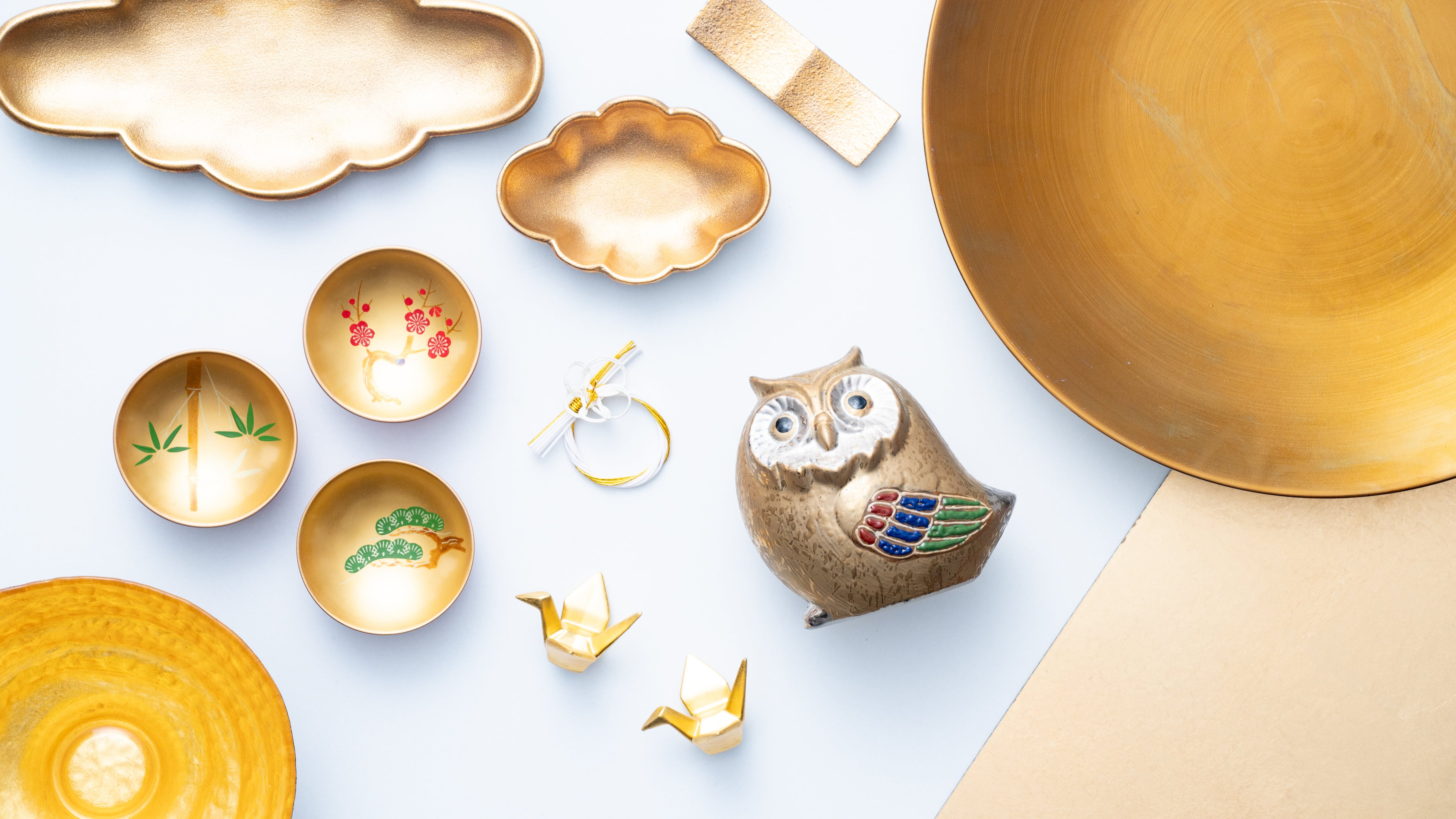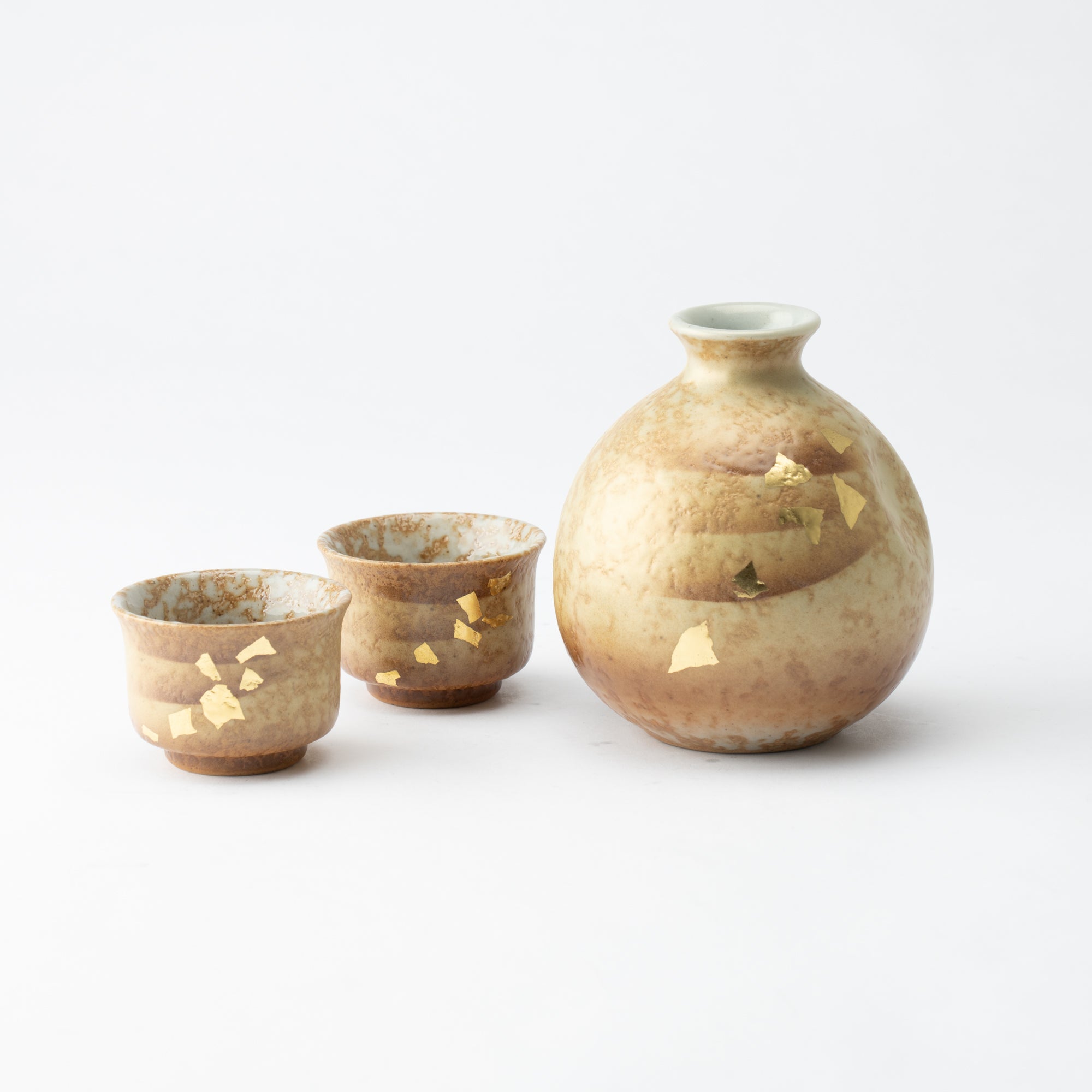
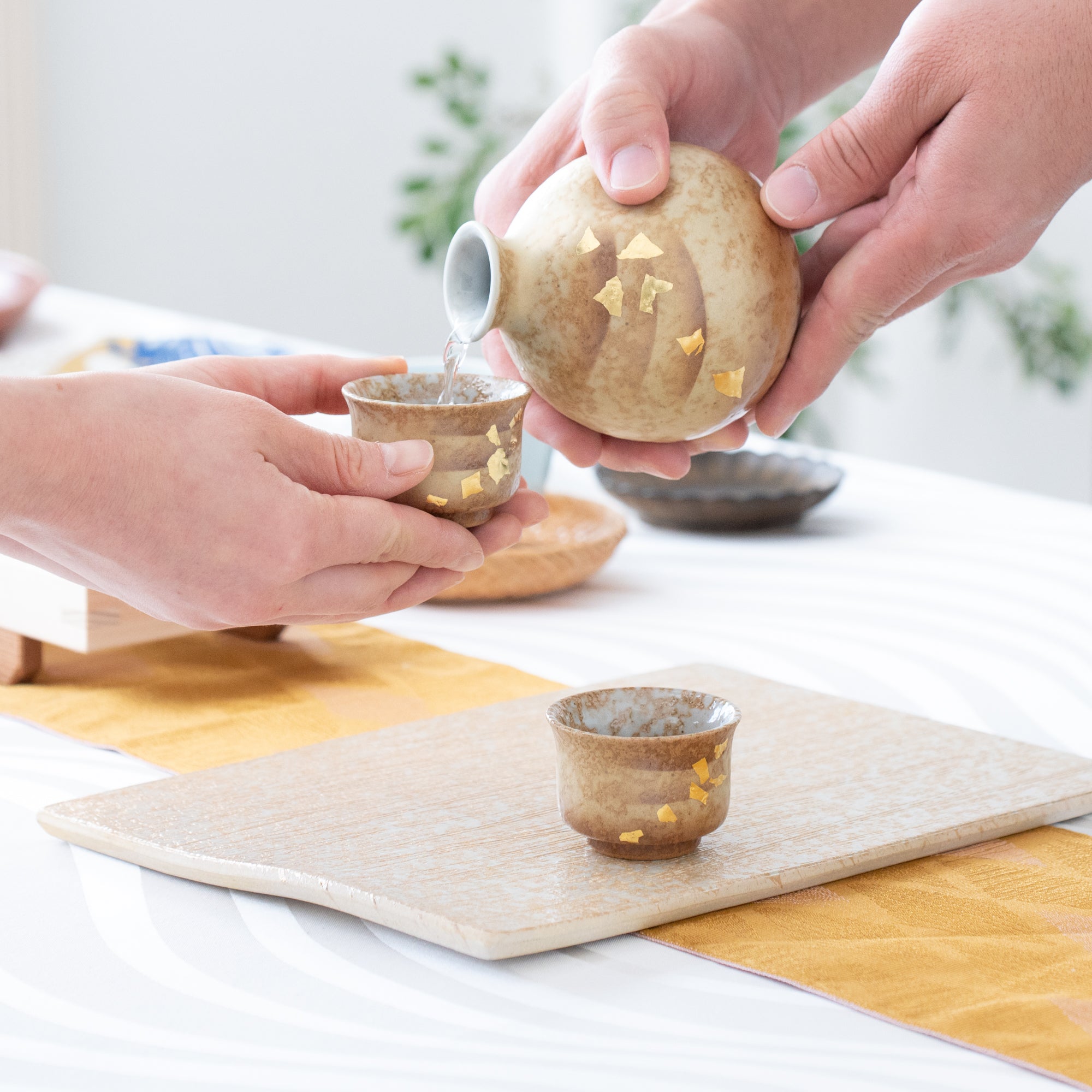
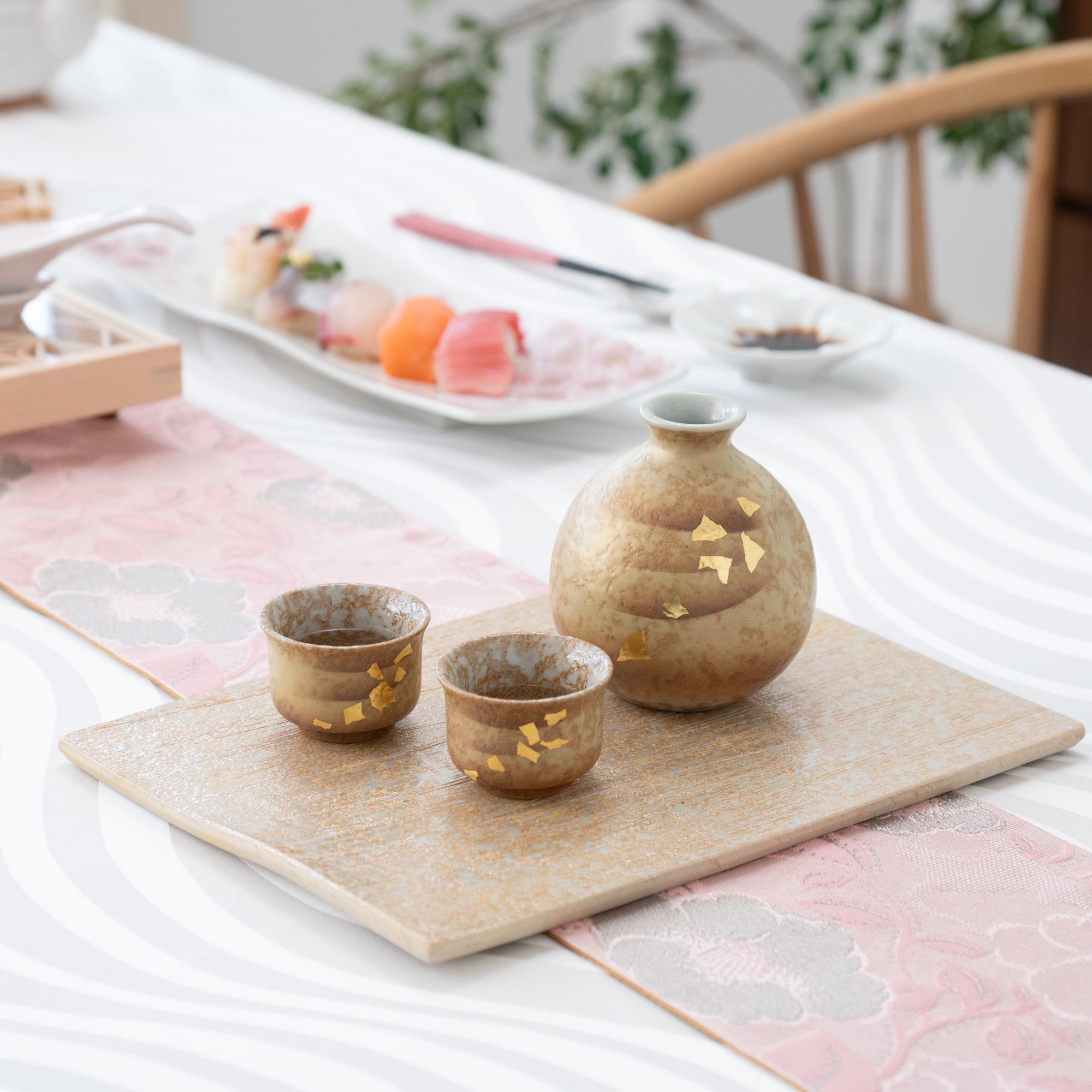
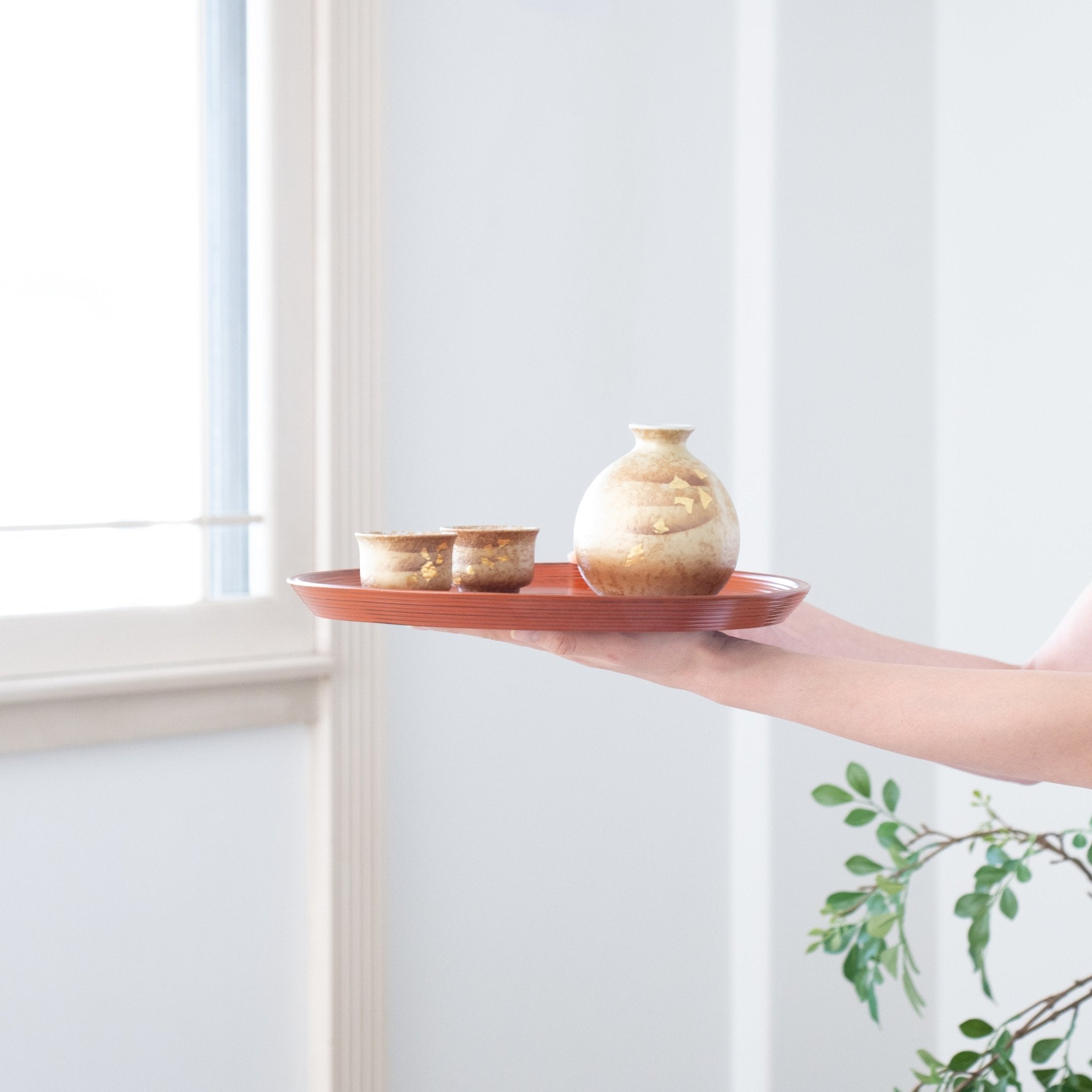
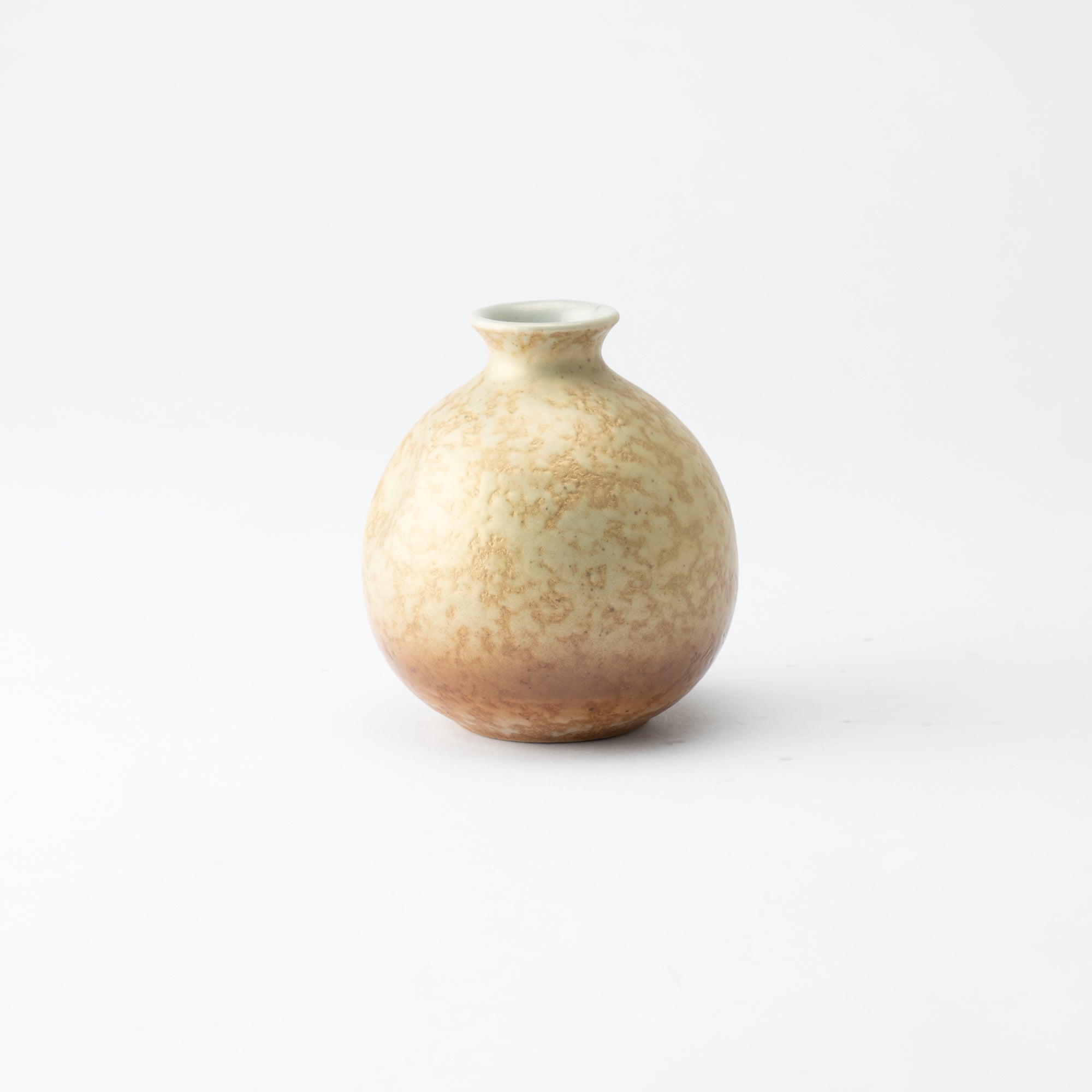
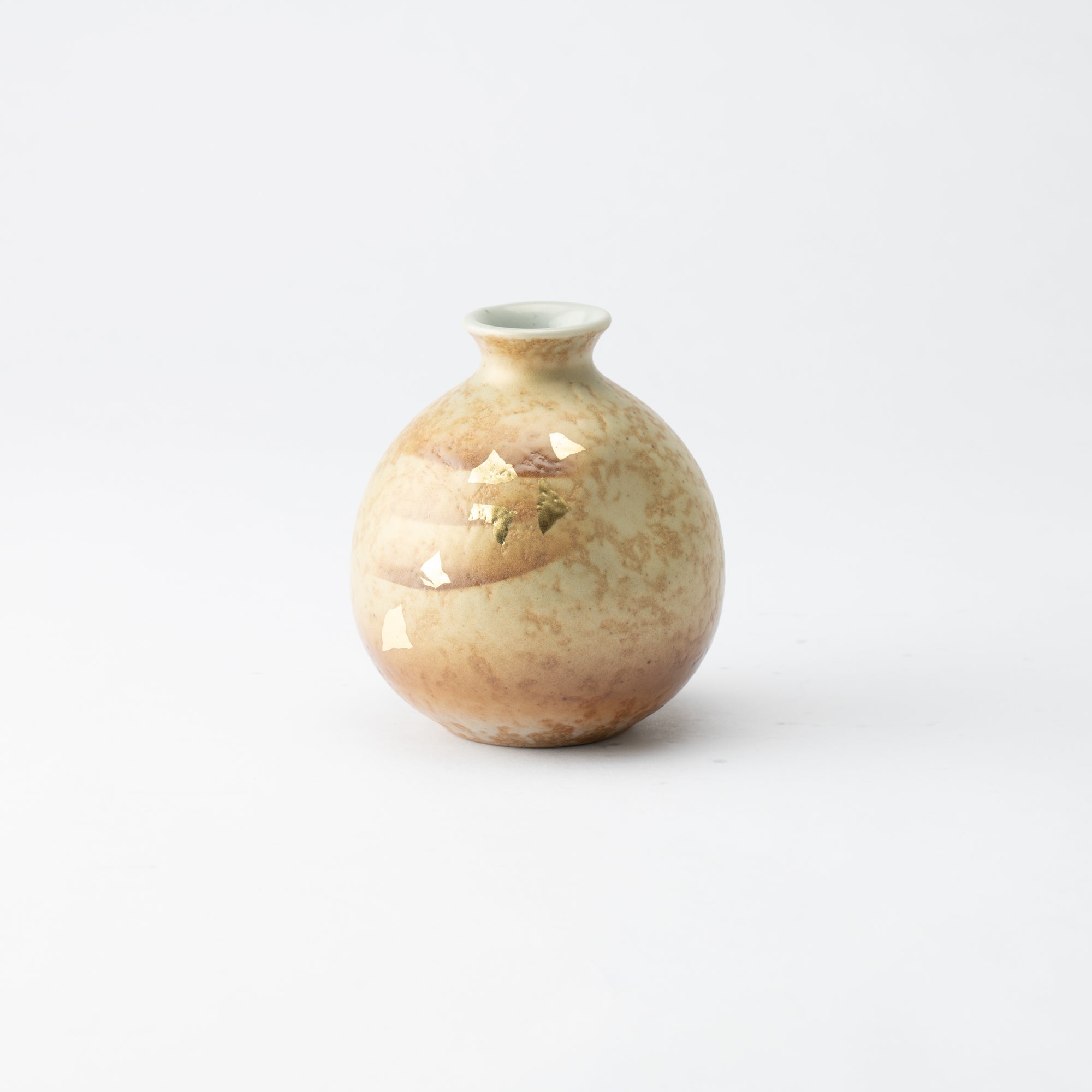
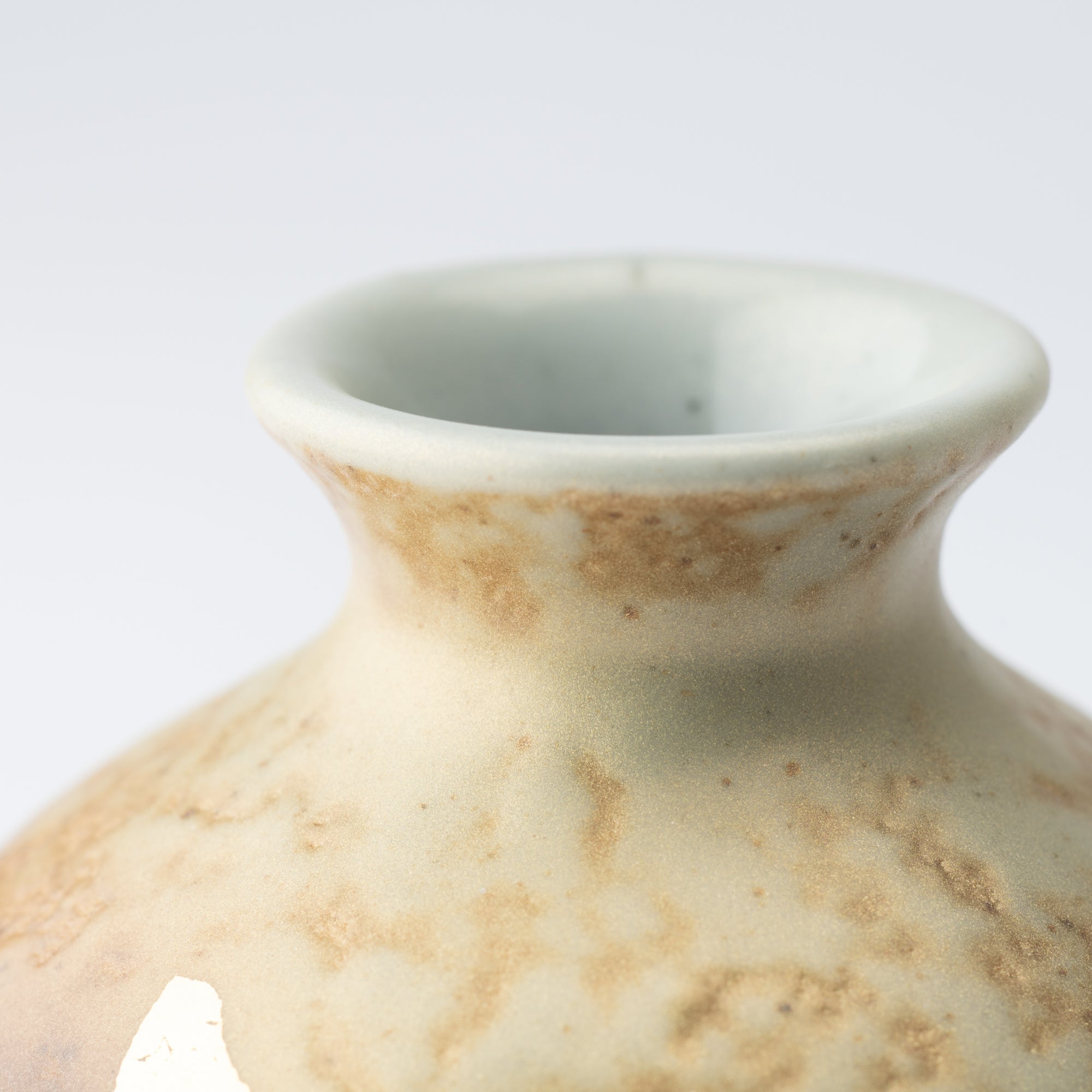
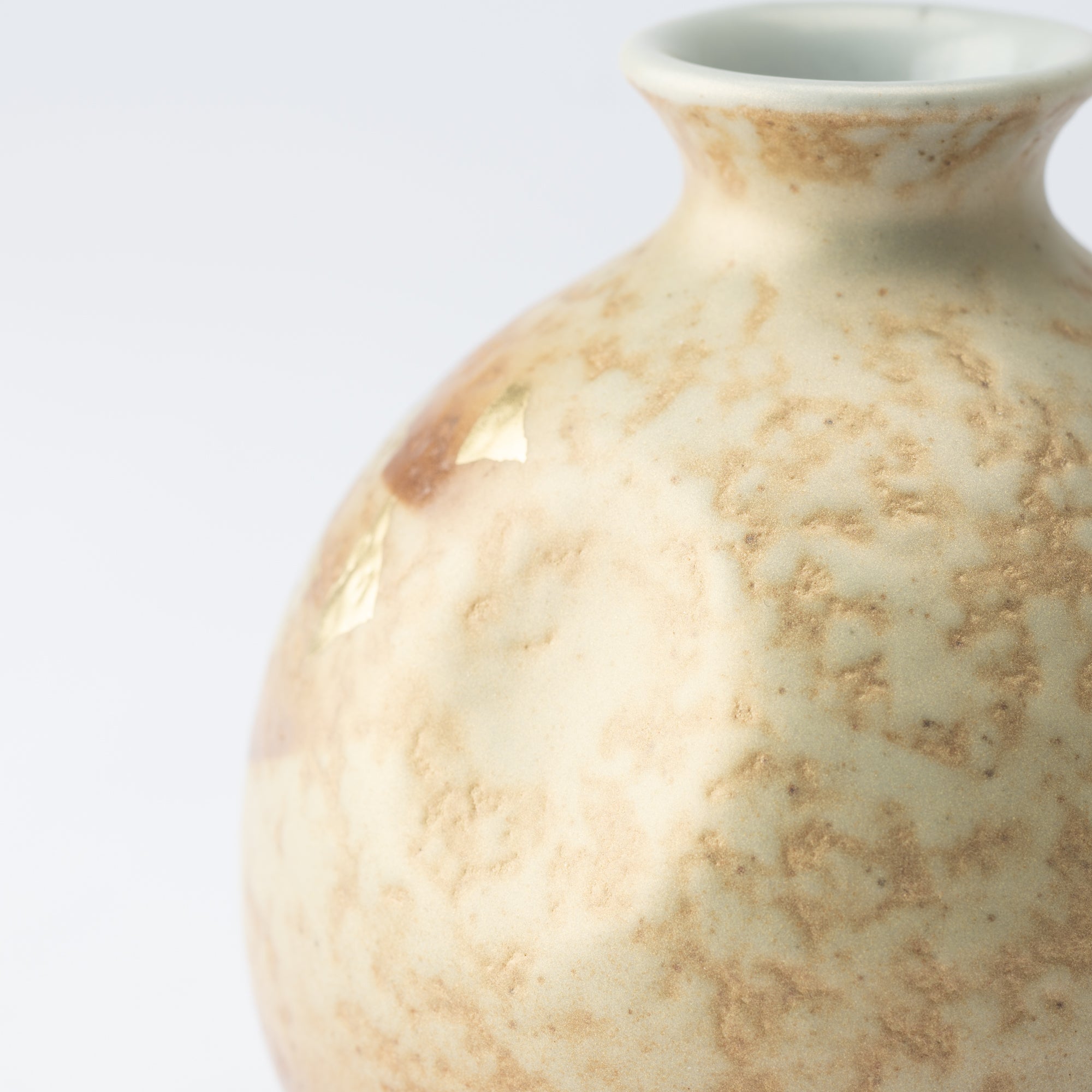
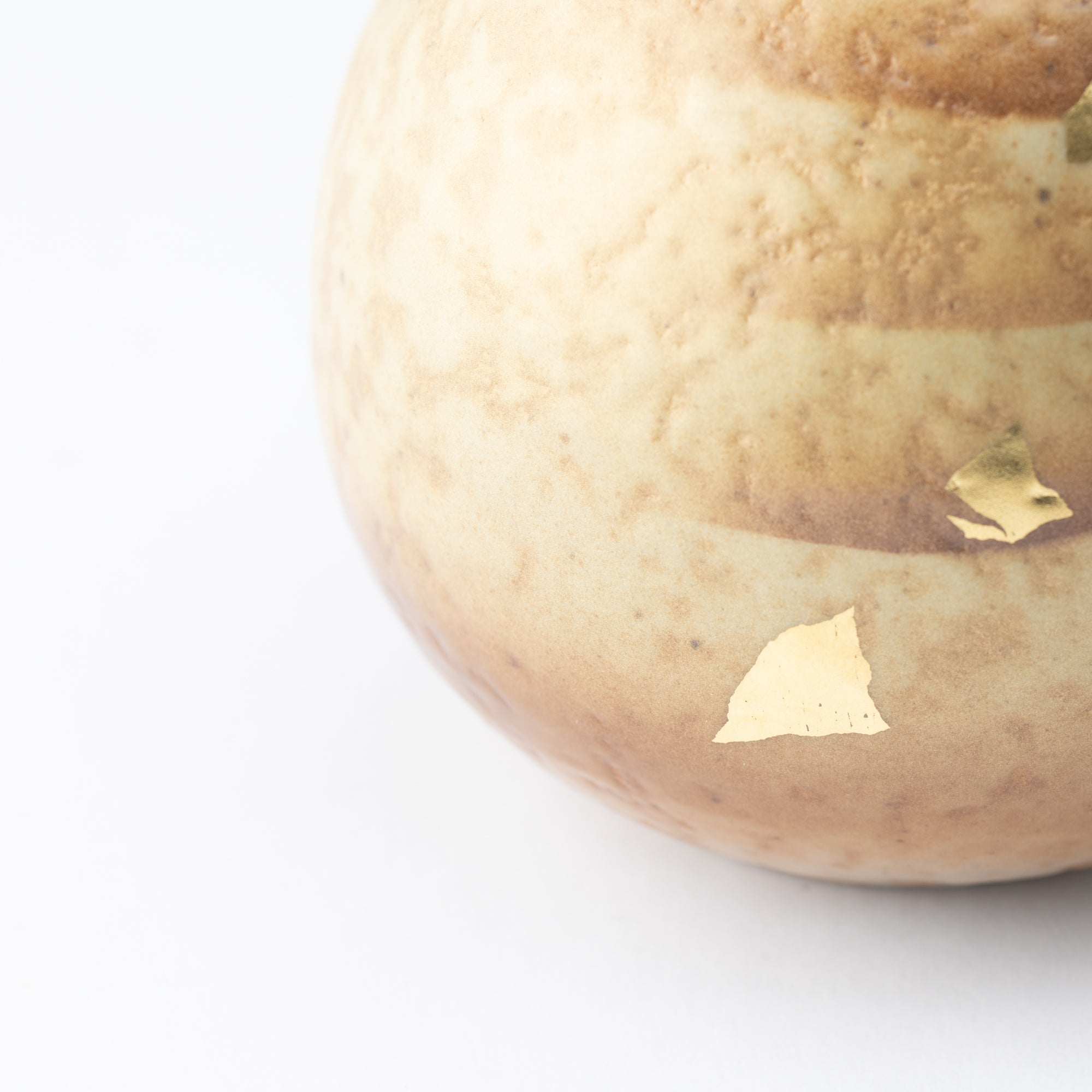
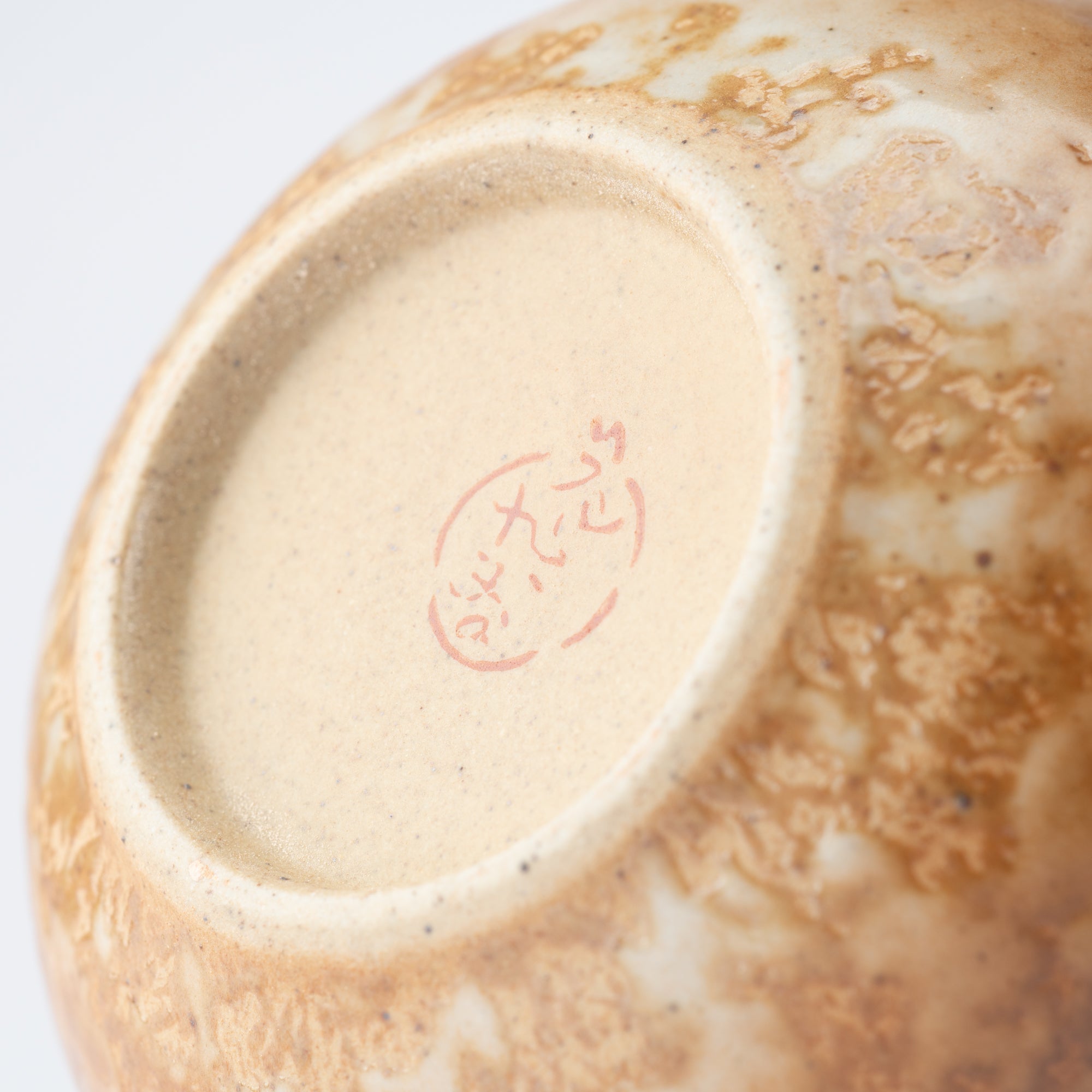
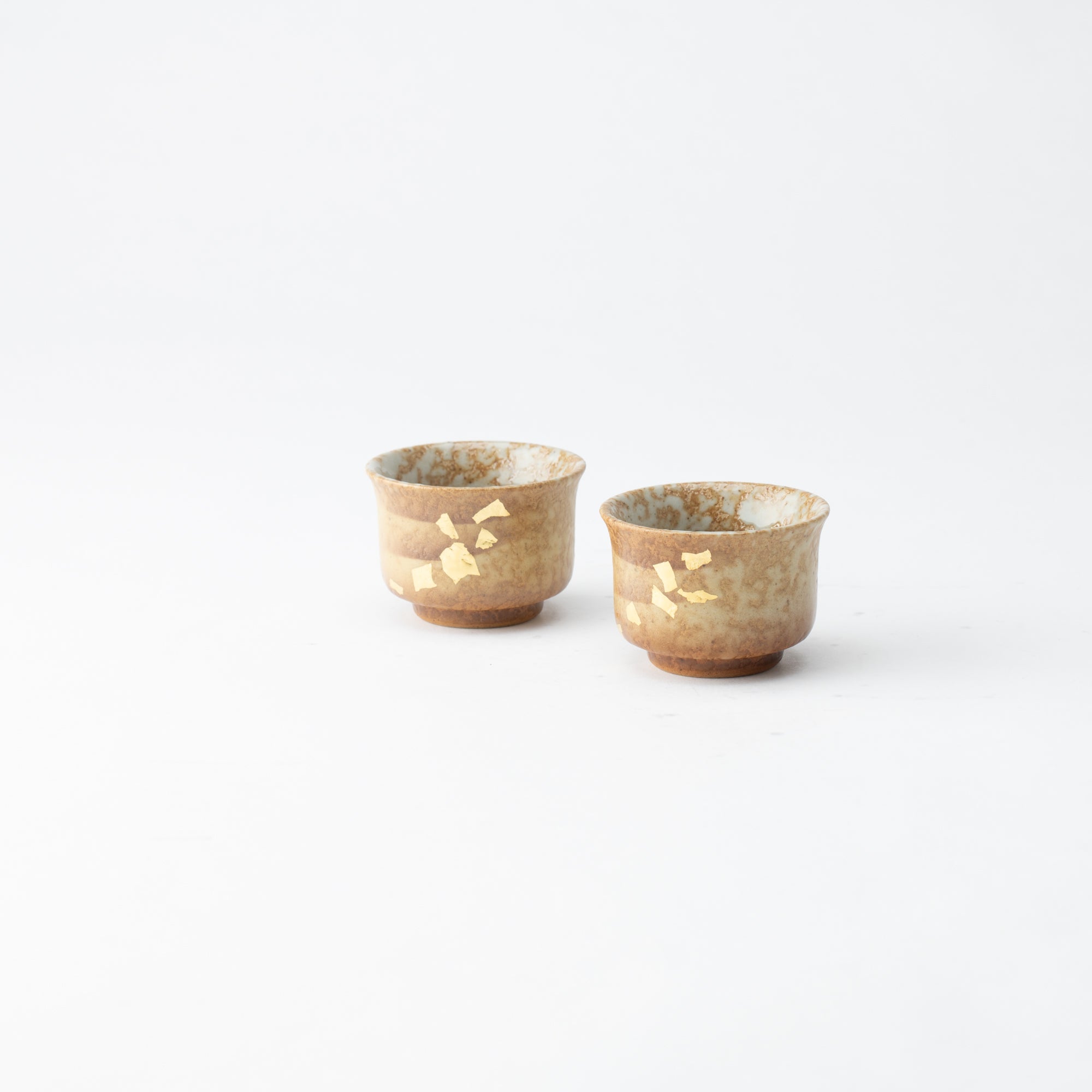
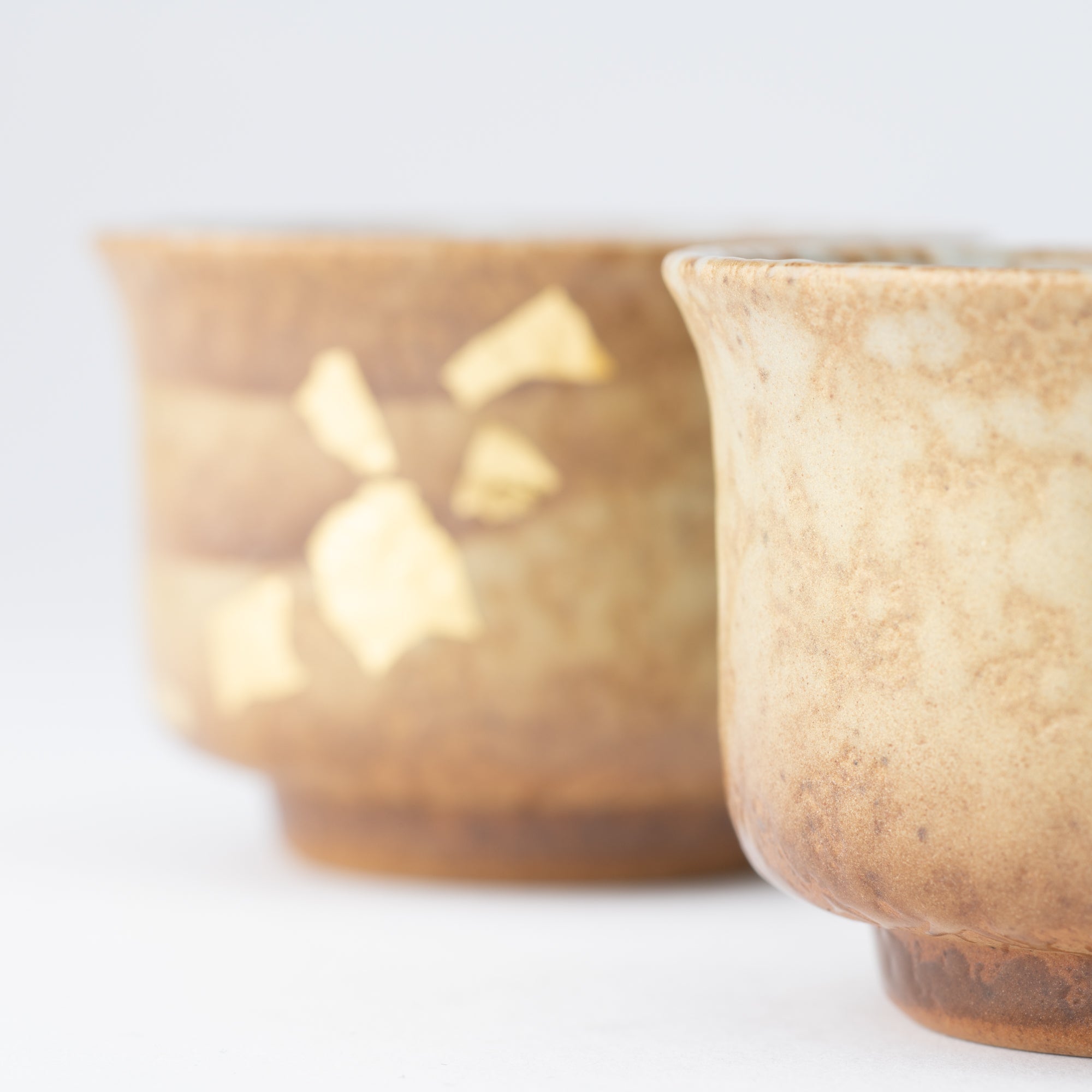
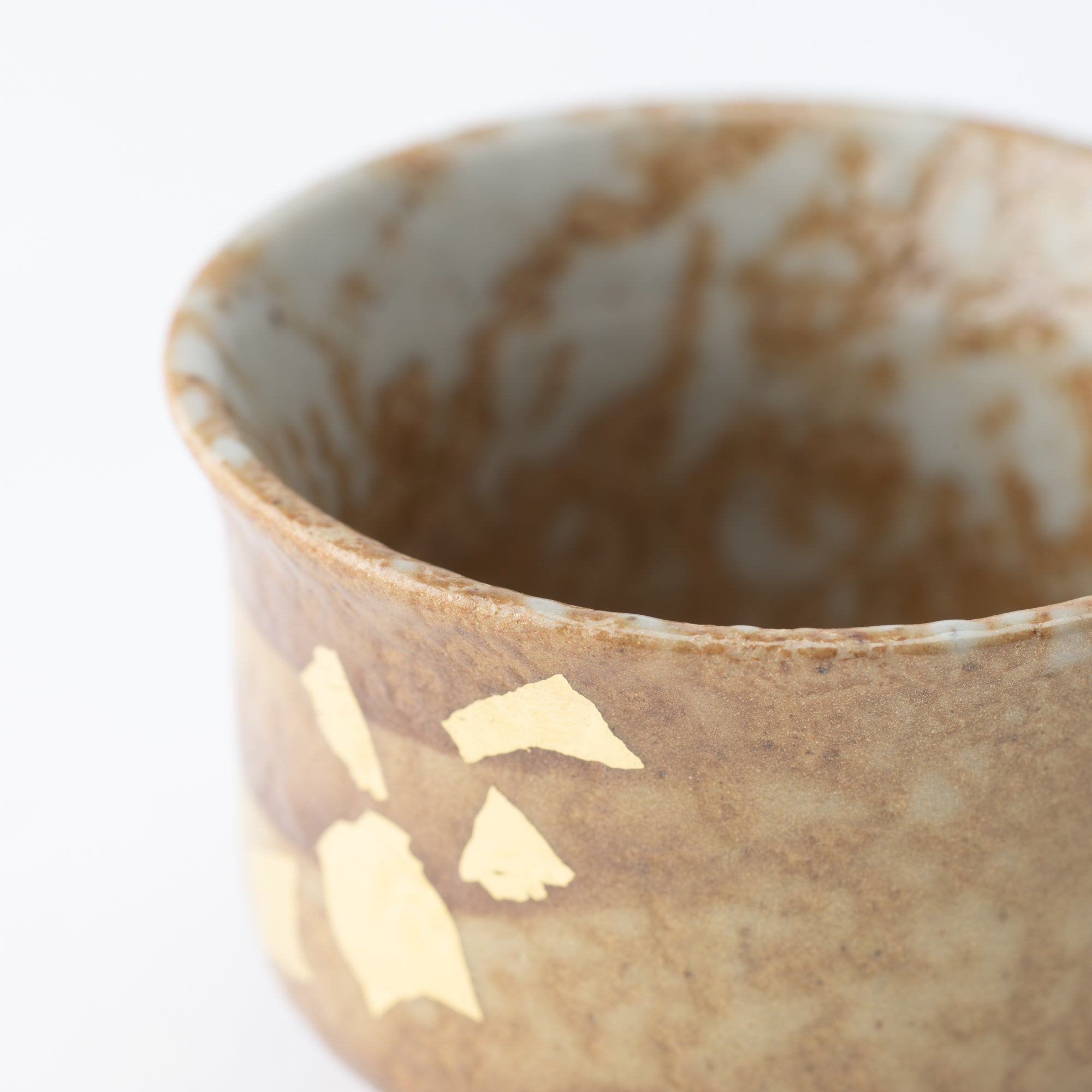
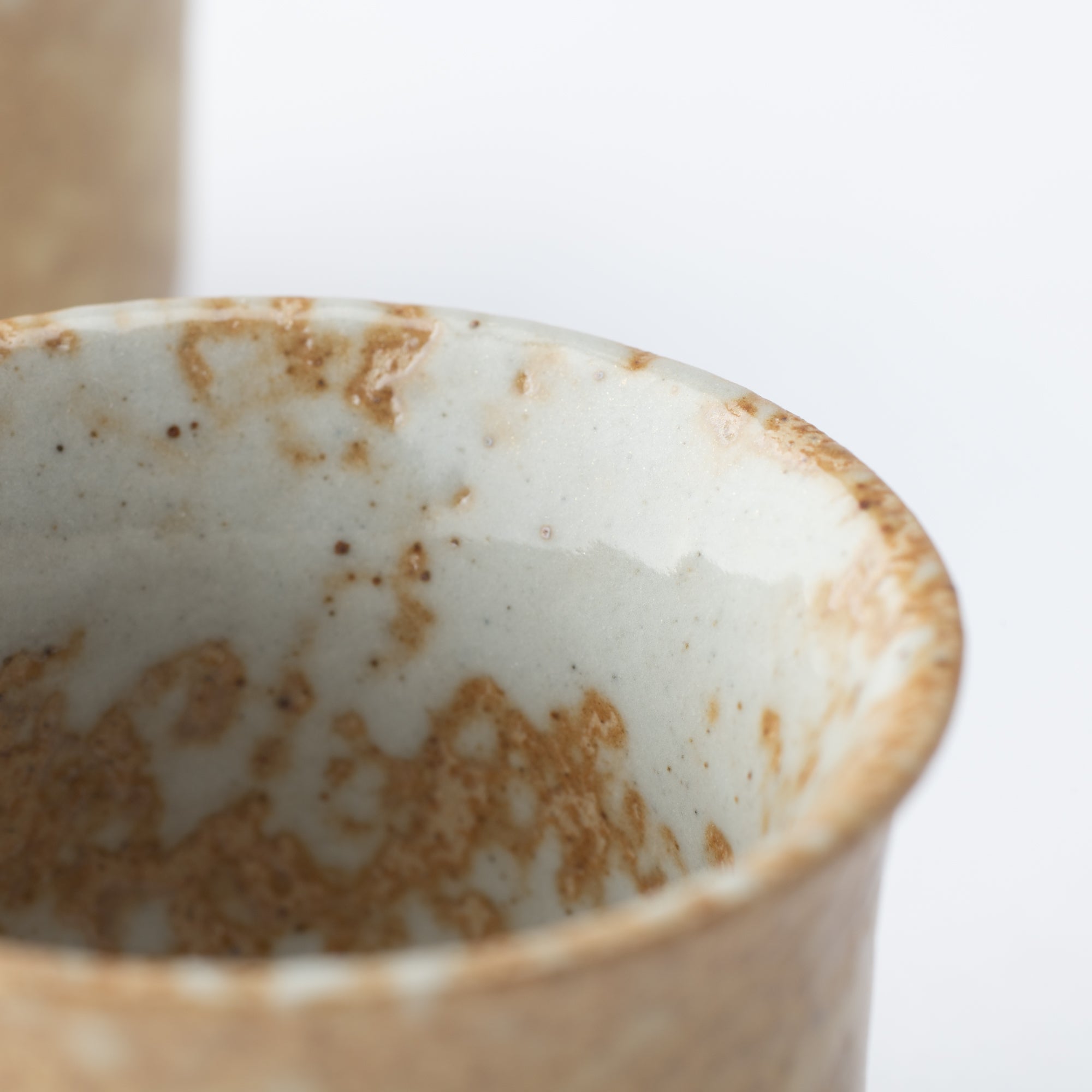
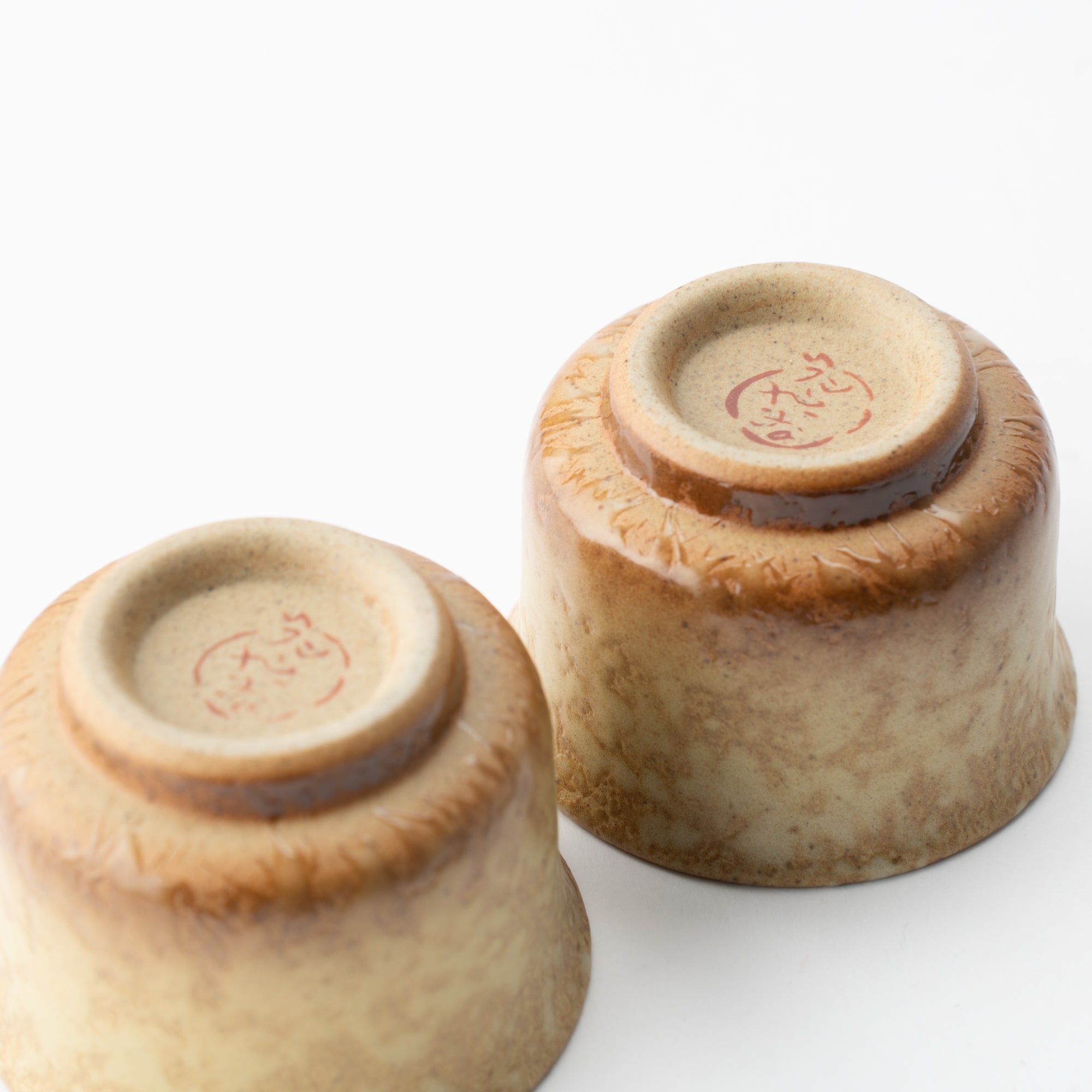
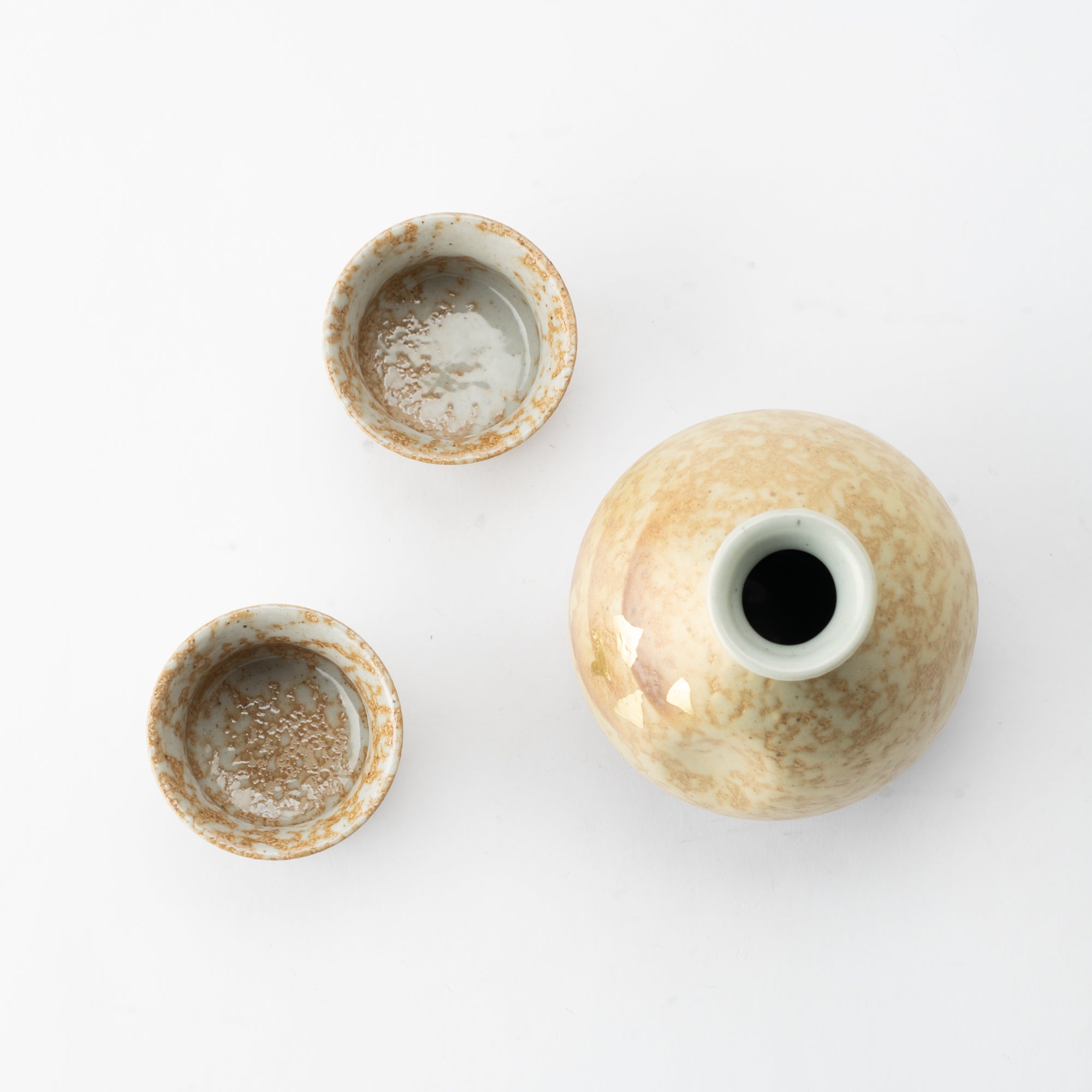
Gold Leaf Kutani Sake Set
Estimated Shipping Widget will be displayed here!
A Kutani ware sake set with the gorgeous shine of gold leaf to decorate your drinking table. The design makes the most of the roughness and warmth of the clay, and the gold leaf decorated like flower petals is a nice accent.
It comes with 1 tokkuri (Japanese sake carafe) and 2 sake cups.
The warm, handcrafted texture of stoneware feels relaxing and soft to your mouth, bringing out the rich yet delicate taste of sake.
It will infuse an elegant and sophisticated atmosphere into your dining table or home bar.
See more items from our Kutani collection for a more unified and beautiful Japanese table setting.
DETAILS
| Quantity | 1 sake carafe and 2 cups |
| Size | [Cup] D 5.7 cm (2.2 in) x H 4 cm (1.6 in) |
| Capacity |
[Carafe] 350 ml (11.8 fl oz) [Cup] 45 ml (1.5 fl oz) |
| Material | Porcelain |
| Microwave | No |
| Dishwasher | No |
Crafts
Kutani ware is a pottery produced in the Kaga region of Ishikawa Prefecture, with a history spanning over 350 years. It is characterized by the heavy brilliance of the five colors of navy blue, red, purple, green, and yellow that are applied to the bold and daring lines. Its long history has evolved through the tireless efforts and enthusiasm of people who have sought innovation while maintaining tradition.
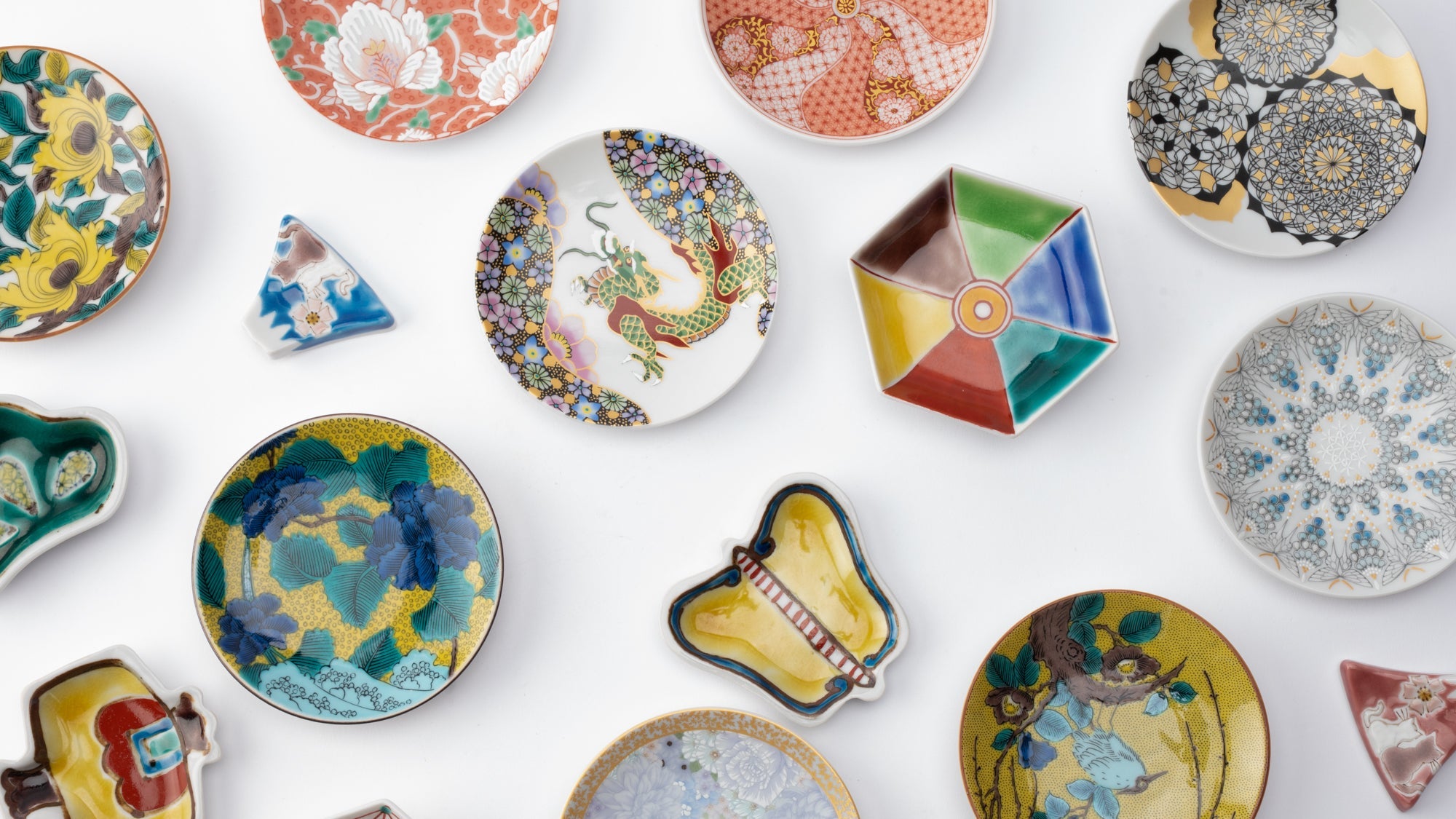
Choose options
















Sake Sets
Sake reveals different expressions through warmth, air, and the vessel that holds it. When preparing to enjoy fine sake, start by choosing the right sake set, thoughtfully designed to bring harmony to both taste and atmosphere.
Crafted by Japanese artisans, these coordinated pieces bring together balance, texture, and beauty in every pour. A well-matched sake set turns the simple act of serving into a quiet ritual, deepening your appreciation with every sip. Explore our collection to find the set that perfectly complements your way of savoring sake.
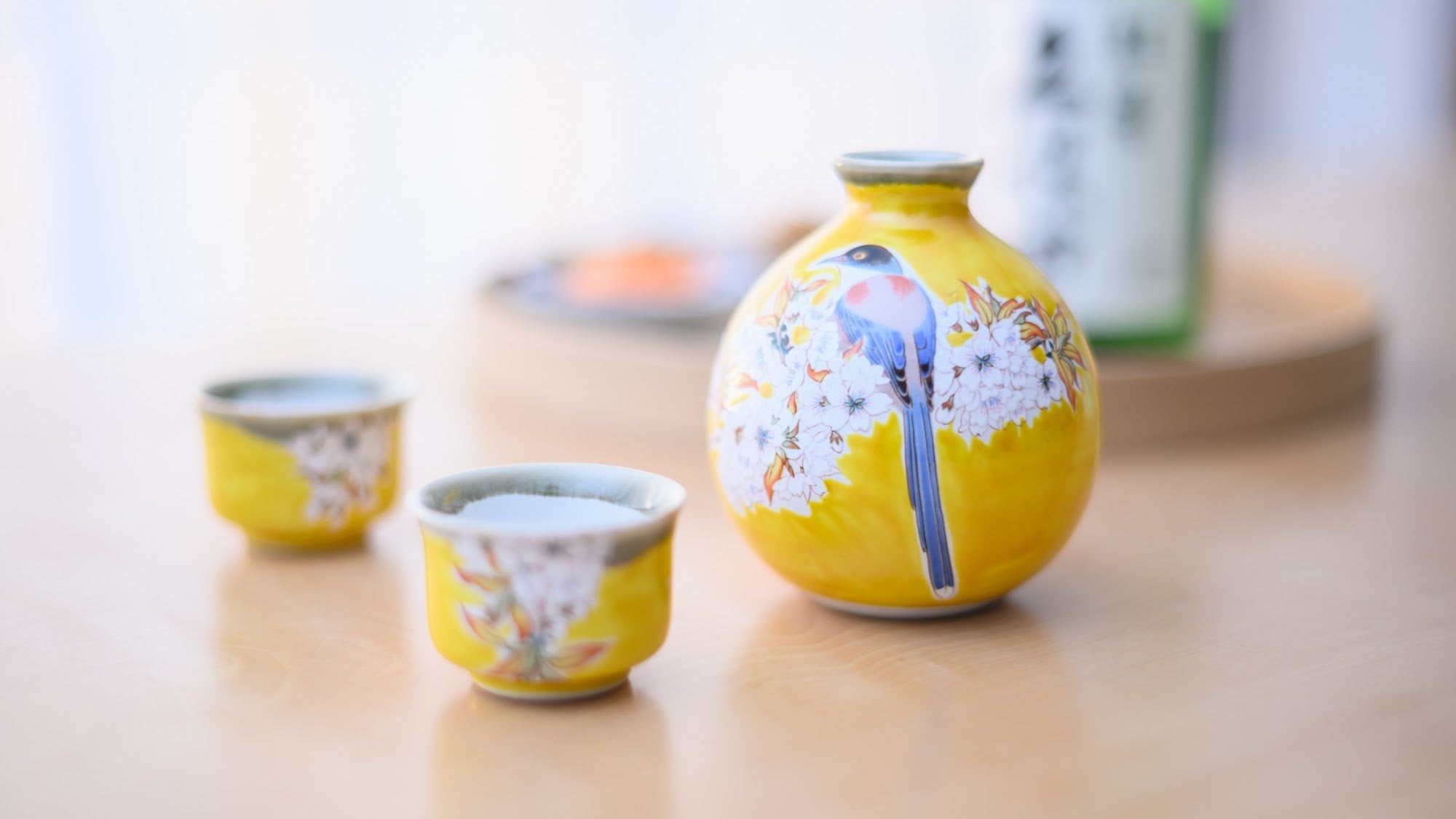
Gold
Gold was first discovered in Japan in the eighth century. Emperor Shomu (701 CE–756 CE) used it extensively to gild Buddha statues. The color gold came to evoke a sense of sacredness, nobility, and luxury. Japan places great emphasis on the sense of seasons, and gold is often associated with the bountiful autumn and the New Year, conveying a festive and auspicious atmosphere.
Real gold powder and paint is used in traditional Japanese decorative techniques like maki-e and kinsai for a brilliance and luxurious feel that only this material can bring.
